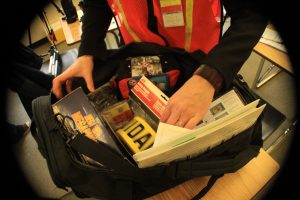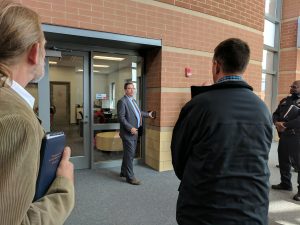
Emergency Evacuation Kit
I am pretty sure that one of the first magazine columns I wrote more than twenty years ago described the importance of emergency evacuation kits. I find these kits to be just as important today as they were then. I still find schools today that do not have these valuable emergency preparedness assets. Known by a variety of names, emergency evacuation kits contain the bare essential items and information school officials need to manage a crisis event when it is not possible to go back into their school or when structural damage occurs after occupants are sheltered.
Though I have seen a variety of commercial variants, the best quality emergency evacuation kits I have seen have all been assembled by school and public safety officials. I have also seen a variety of containers used including soft bags, plastic file boxes and even rolling trash cans. I have found that rolling backpacks with collapsible handles are perhaps the most practical option as they can easily be carried down a flight of stairs, over snow-covered ground or rolled on pavement for extended evacuations.
I have always suggested that clients consider having two duplicate kits stored in separate locations in the building with one kit being located away from the main office. This can be important during a hostage situation or tornado strike which affects the main office. As with other critical emergency preparedness measures, it is a good idea for backup personnel to be designated to get each kit out in an emergency. I also recommend that kits be taken outside during evacuation drills and taken to shelter areas when sheltering for severe weather or hazardous materials incidents.
Emergency evacuation kits by any name usually offer a good return on the investment of time and fiscal resources required to develop and maintain them.

